Start your Thanksgiving turkey in this fragrant apple cider brine with orange, rosemary, and ginger for a juicy, tender, and flavorful bird every time.
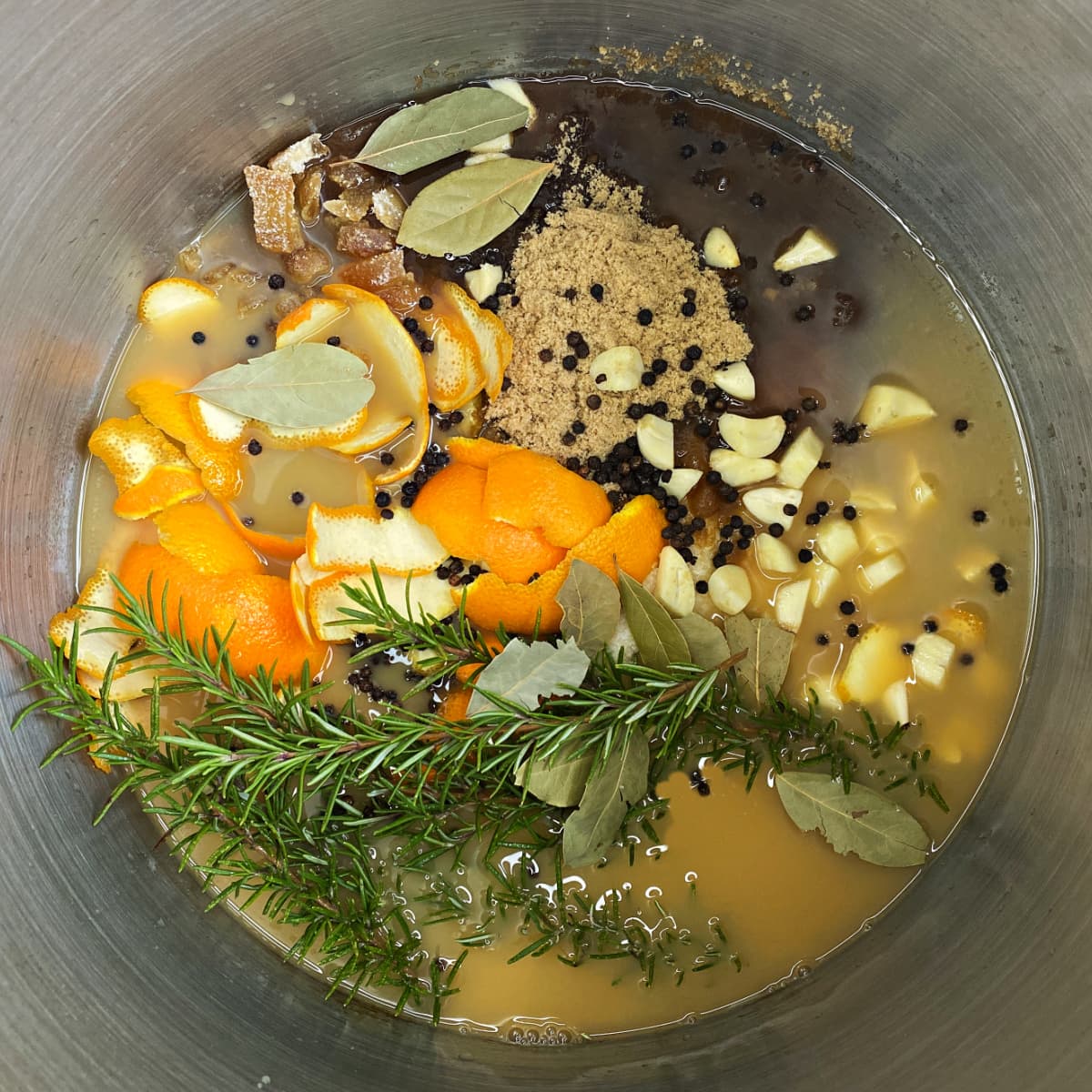
Jump to:
- The Story Behind Our Turkey Brine
- While You'll Love this Apple Cider Turkey Brine
- What You'll Need (Ingredients + Equipment)
- Choosing the Right Turkey for Brining
- How to Brine a Turkey (Step-by-Step)
- Substitutions and Flavor Variations
- Make Ahead & Storage Tips
- Top Tip: Brining Isn't Just for Turkeys!
- FAQs About Turkey Brining
- More Thanksgiving Recipes You'll Love
- Apple Cider Turkey Brine with Citrus, Ginger, & Herbs
The Story Behind Our Turkey Brine
The scent of apple cider simmering with oranges, rosemary, and ginger always feels like the start of Thanksgiving at our house. It's cozy and bright all at once - a little sweet, a little savory - the signal that the holiday cooking has officially begun. For us, that fragrance means the apple cider turkey brine is on the stove.
We've been brining our Thanksgiving turkeys for years, and this version (inspired by Ree Drummond's favorite turkey brine, with a few cozy twists) has become our favorite. The apple cider and orange give the meat a subtle sweetness, while the ginger and rosemary bring warmth and depth. It doesn't just flavor the turkey - it transforms it into something tender, juicy, and deeply flavorful.
Brining might sound like one more thing to do before the big meal, but it's worth every minute. Once you've tasted a turkey brined in apple cider, it's hard to go back. All it takes is a big pot, a few fragrant ingredients, and a little advance planning.
While You'll Love this Apple Cider Turkey Brine
- It makes your turkey extra juicy. The salt and cider work together to help the meat hold on to moisture, so every bite stays tender and flavorful.
- The flavor is bright and aromatic. Fresh citrus, herbs, and ginger give the turkey a subtle, balanced depth - festive without being heavy.
- It smells amazing. As the brine simmers, your kitchen fills with the scent of apples, oranges, and rosemary - a preview of the feast to come.
- It's easy to make. Just simmer, cool, and soak. The brine works quietly in the background while you move on to other dishes.
- It's versatile. Use the same brine for chicken, pork, or Cornish hens any time you want tender, flavorful meat.
What You'll Need (Ingredients + Equipment)
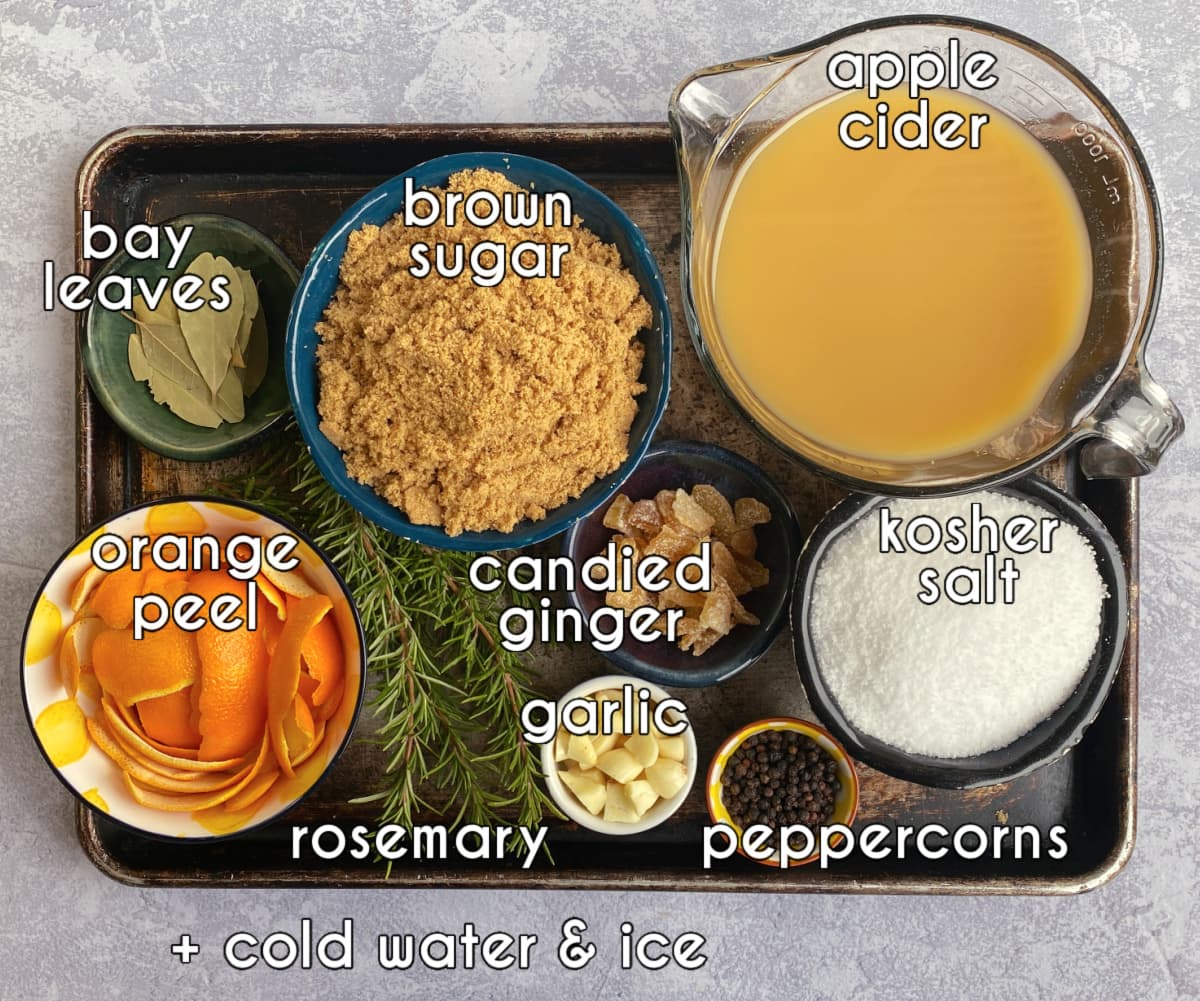
Ingredients
This fragrant, flavorful brine comes together with a few fresh ingredients and pantry staples. The key is balance - sweet apple cider, bright citrus, and savory herbs all working together to infuse your turkey with flavor from the inside out.
- Apple cider: Apple cider is a little less processed than apple juice; we like that. You can definitely use apple juice for this recipe though.
- Brown sugar: Brown sugar brings a sweet, caramelly element to the brine.
- Kosher salt: We recommend that you use Kosher salt. Do not use table salt. It is commonly fortified with iodine, which will cause your turkey to take on a metallic taste.
- Peppercorns: Use any peppercorns. Plain black peppercorns work just fine.
- Bay leaves
- Garlic: Use fresh garlic. Peel it and coarsely chop it.
- Rosemary: Use fresh rosemary. Rosemary is easy to grow, and remains evergreen so you can harvest it year-round.
- Candied ginger: You can buy crystalized ginger chips in most grocery stores, Asian specialty stores, and online.
- Orange peel: Cut the peel off the orange, taking only as much of the spongy yellow pith as is necessary.
- Cold water
- Ice: If you live near a Sonic, go get a bag of ice from them. It's the best!
Equipment
Brining a turkey doesn't require any special tools - just a little advance planning and the right container to keep things cold and submerged.
- Large stockpot: Perfect for simmering the brine and holding smaller birds.
- Food-safe bucket or cooler: A great option for large turkeys or when fridge space is limited.
- Brining bag: Makes cleanup easy and keeps the turkey fully submerged.
- Plastic garbage bags (unscented!): Double them up if you don't have a brining bag.
- Ice or ice packs: Useful for keeping your brine chilled if you're storing it in a cooler.
Whatever you choose to brine your turkey in, it needs to be large enough to accommodate your turkey, with a little room to spare. It either needs to fit in your fridge, or you must have an alternate plan for keeping it cold while the turkey soaks.
Choosing the Right Turkey for Brining
Fresh vs. Pre-Brined Turkeys
When selecting a turkey (or any kind of poultry) for brining, look for a fresh bird that is labeled "natural" or "organic." These turkeys will take on the flavors of the brine much more readily.
Avoid using turkeys labeled "basted", "kosher", "enhanced," or "self-basting." These turkeys have been injected with flavoring additives and saline solutions, which can prevent the bird from absorbing flavor from any home brining, and lead to overly salted meat in the process.
Can You Brine a Pre-Brined or Kosher Turkey?
There are times when it can be difficult (if not impossible) to find a fresh, natural turkey. You can brine a prebrined bird (we call this "rebrining"), but if you do so, you should cut the salt level in this brine recipe by half or the meat may end up tasting too salty.
Our Brining Experiment (What We Learned from 5 Turkeys)
We weren't sure how much of the brine's flavor a prebrined bird would absorb, so we cooked five different turkeys (not all at the same time!) to test it. All of the turkeys were cooked using the same Hi-Lo roasting method.
In our experience, the meat from the rebrined turkeys definitely tasted more tender and flavorful than the control turkey in our experiment, which was cooked with only factory prebrining and no home brining.
The fresh, natural birds, however - those that were only brined at home - won hands-down over the rebrined turkeys. The fresh turkeys absorbed far more of the brine's citrusy, spicy, sweet flavors, and their meat was notably more moist and tender. Surprisingly, they cooked up more evenly as well.
How to Brine a Turkey (Step-by-Step)
Make the Brine
Start the brining process no later than the evening before the day you intend to cook the turkey. (i.e., for a Thanksgiving Day turkey, start no later than Wednesday evening.)
Combine all the brine ingredients except water and ice in a large stockpot. Bring to a boil, stirring until the salt and sugar dissolve.
IMPORTANT: If you are using a prebrined turkey, cut the amount of salt in this brine recipe by half (i.e., use ¾ cup instead of 1½ cups).
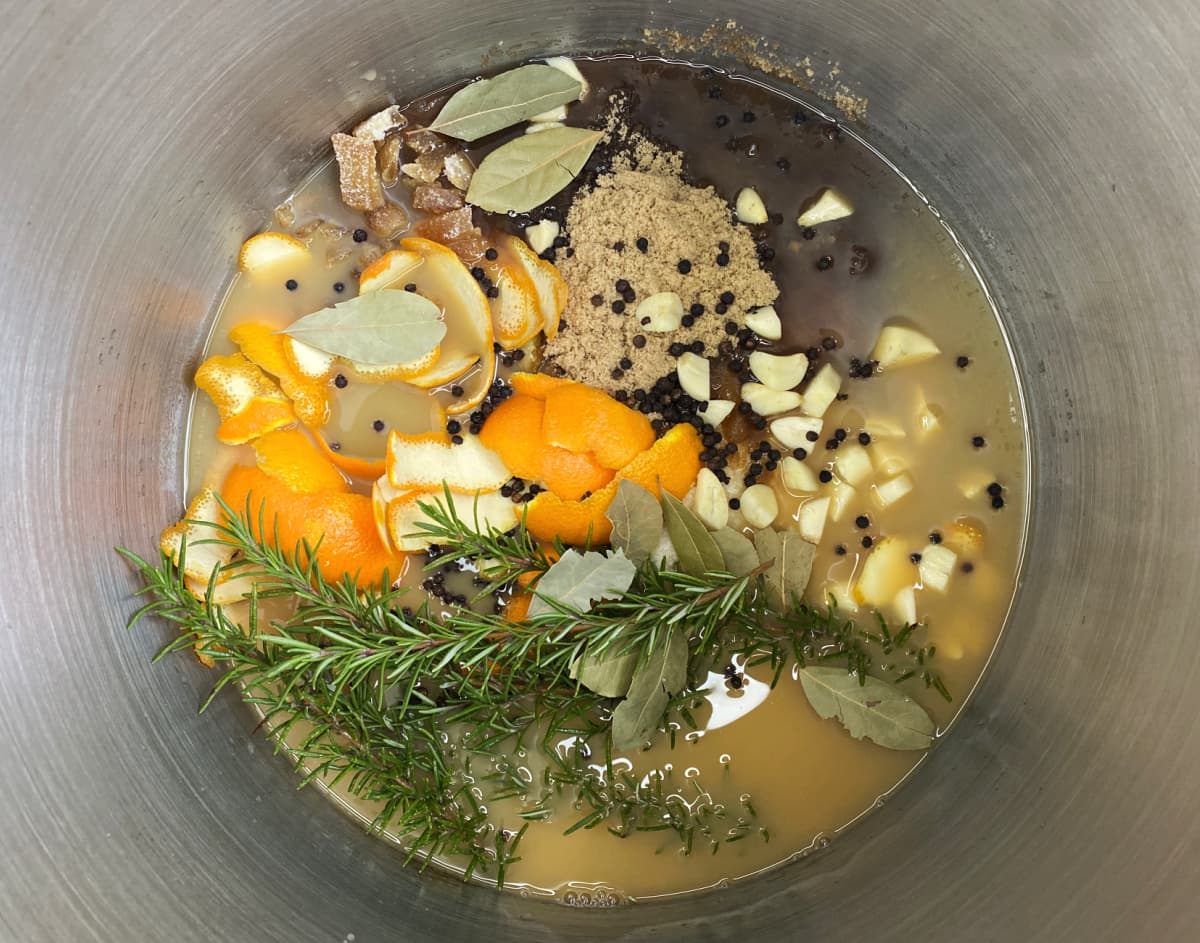
Turn off heat, stir in a gallon of cold water. Allow the brine to cool completely. (You can speed up the process by placing the cooling brine in the fridge or freezer for a short time.)
Hint: This aromatic brine base can be made up to 3 days ahead of time.
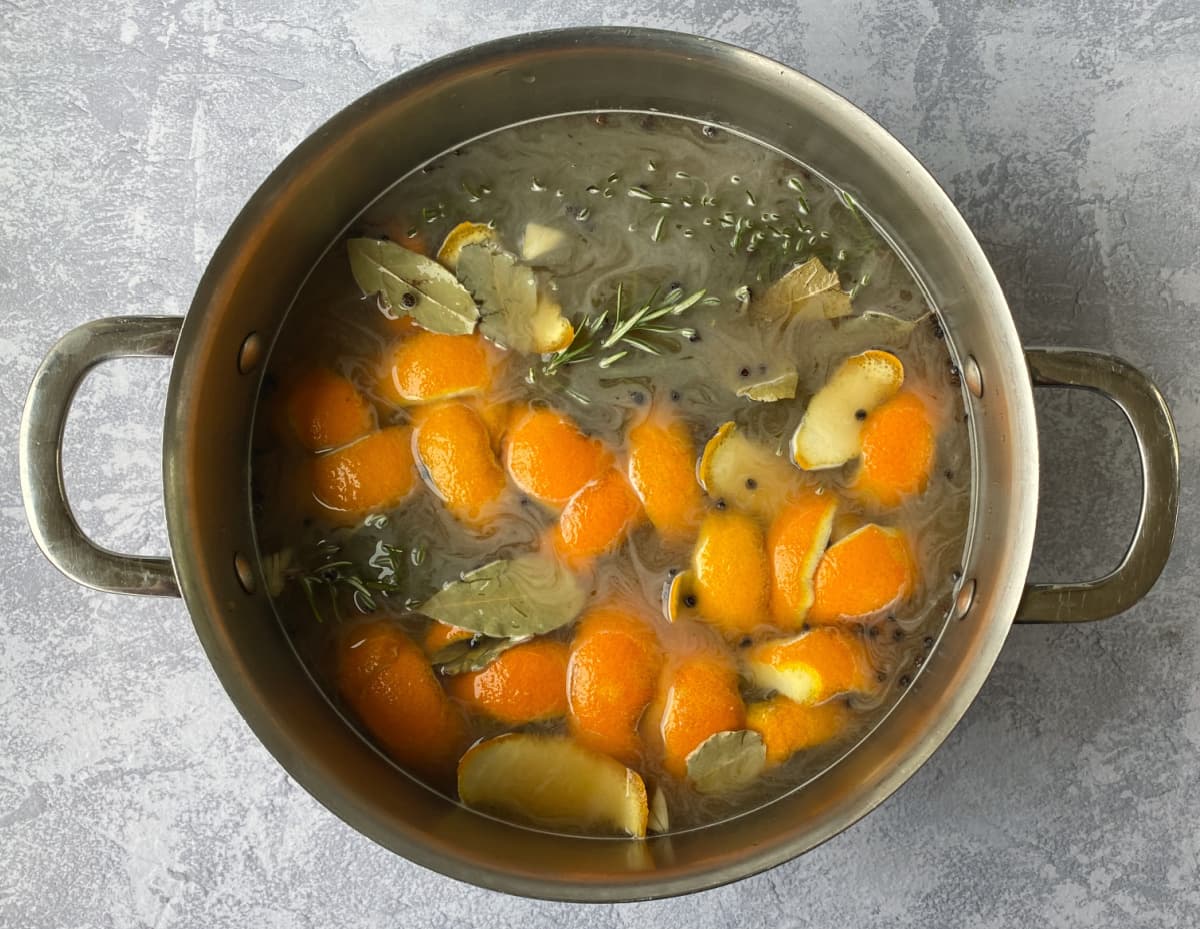
Prep the Turkey
Start with a fresh or fully thawed turkey.
Prepare the turkey by removing all wrapping and any parts (neck, heart, liver, etc.) found in the cavity. (They can be used to make giblet gravy if you're into that.)
Use kitchen shears to remove that weird plastic leg holder thing (fyi: it's called a hock lock). It's oven safe, but it will get in the way later.
Place the prepared turkey in a stockpot or turkey brining bag.
- Stockpot Method: (Recommended) Place a cold, uncooked turkey inside a tall stockpot. The height of the pot must be at least a few inches below the top of the turkey as it sits in the pot to prevent sloshing.
- Bucket Method: (Use this method if you don't have a large enough stockpot.) Place the uncooked turkey in a large brining bag inside a bucket.
- Cooler Method: Place the uncooked turkey in a large brining bag inside a cooler. (We recently bought a plugin electric cooler for road trips. It works great for this purpose!)
Soak the Turkey
Pour the cold brine solution over the turkey. Add the ice.
Cover the stockpot or tie the top of the brining bag to seal in the turkey. If you are brining directly in the stockpot, you may want to weigh down the turkey so it is fully submerged.
Ideally, the turkey should soak in the brine for at least one hour per pound. Sixteen hours seems to be the sweet spot for turkey brining, with eight hours being the minimum brining time. Do not brine a turkey for more than 36 hours.
Food Safety Tips: Never pour a hot or warm brine solution over a cold turkey, as doing so can cause bacteria to grow.
Always refrigerate a turkey while brining: never leave it out on the counter.
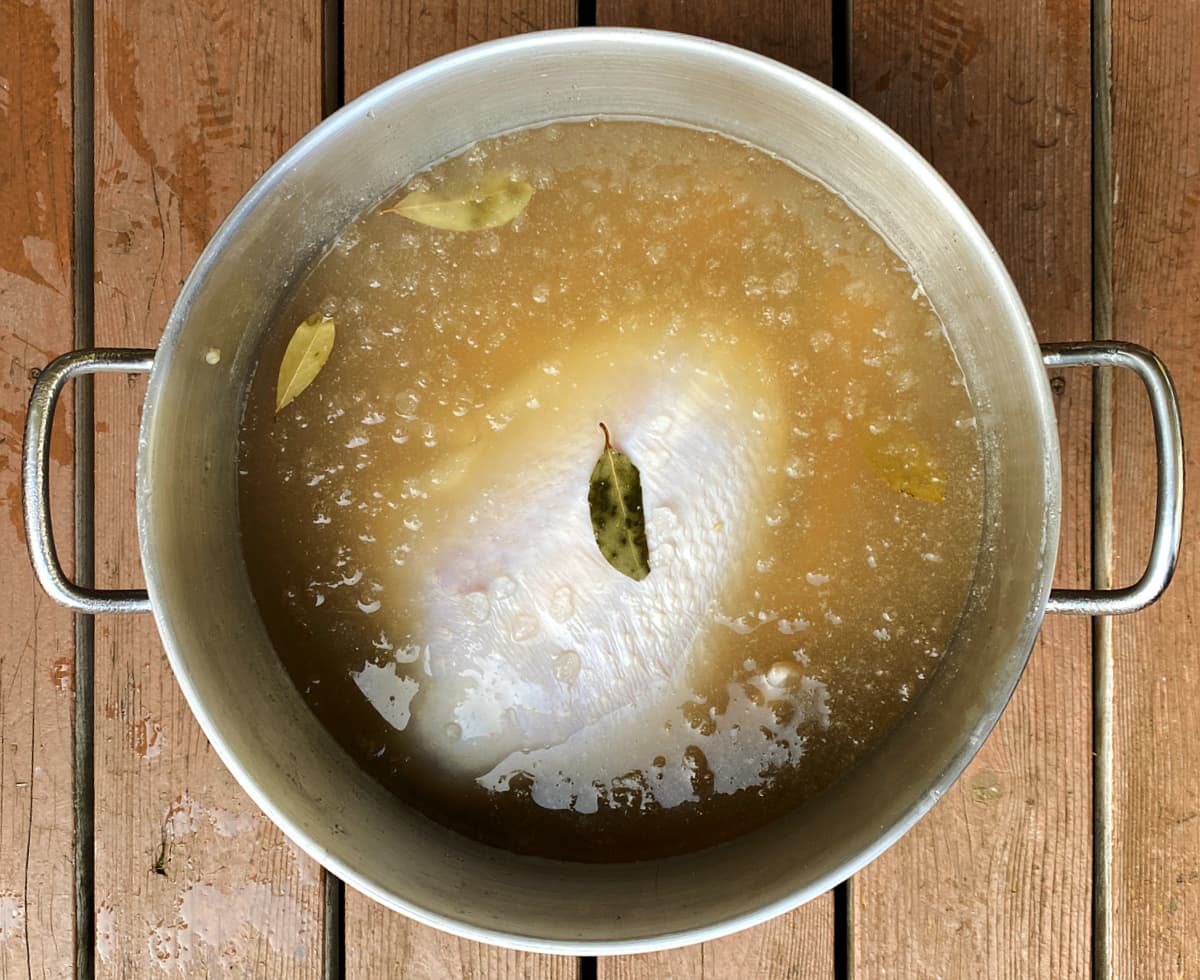
Rinse the Turkey
When the soaking time has elapsed, remove the turkey from the brine.
Fill the bucket or pot that you used to brine the turkey with fresh, cold water. Place the turkey in the cold water and let it soak for a few minutes to remove the salt from the skin.
Pro Tip: We only rinse the turkey when brining a fresh turkey using brine with full-strength salt. You can probably skip the rinse when brining a prebrined turkey (like a Butterball) with the salt at half-strength: in our experience, it doesn't seem to affect the flavor at all.
Pat the turkey dry with paper towels. For extra-crispy turkey skin, let the turkey chill uncovered in the fridge for a few hours before roasting.
For simple, no-fuss directions on how to roast a turkey, visit Perfect Oven Roasted Turkey.
Be sure to sanitize your sink and counters with bleach to prevent cross-contamination and food poisoning.
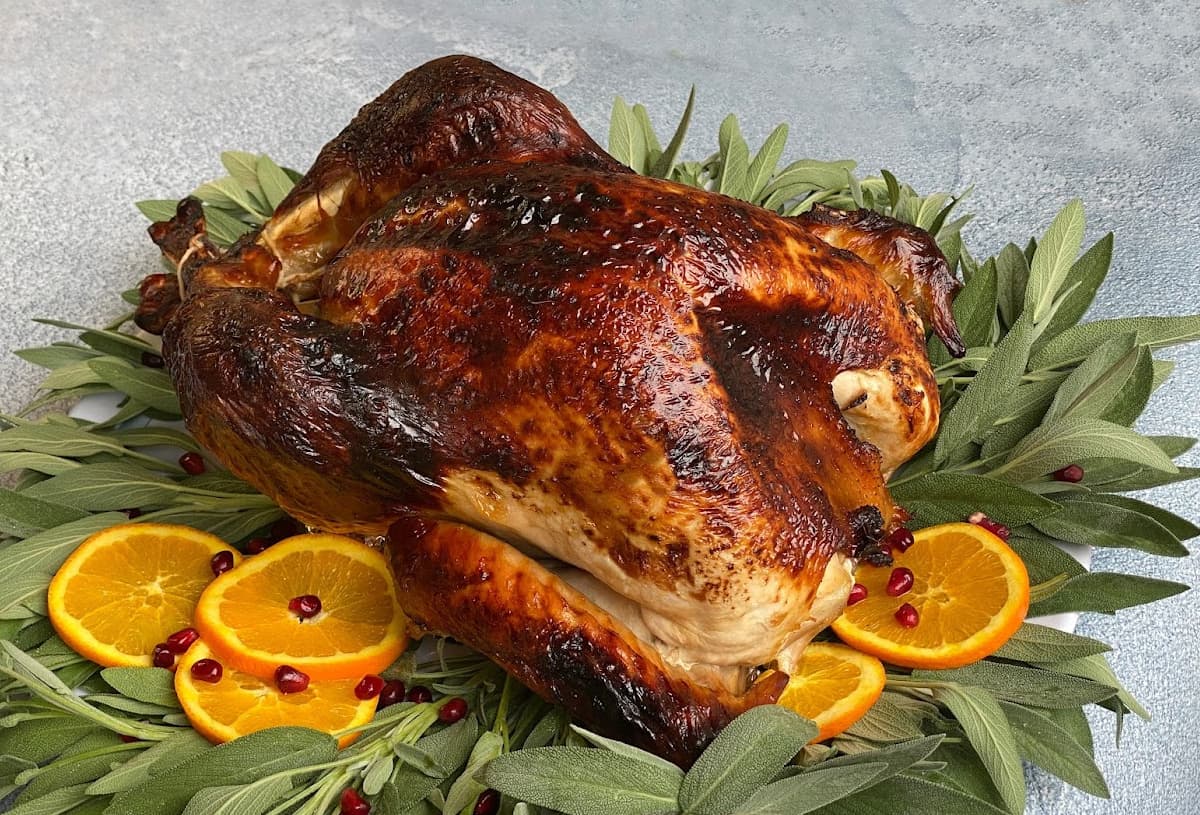
Bird Too Big?
A few years ago, we had an enormous turkey, and didn't have a pot or cooler wide enough to accommodate it. That year, we ended up using a blue Lowe's bucket with double kitchen trash bags as a brining bag. We put the bird in the bag, poured in the ice and brine, and then gathered and tied the garbage bag ties at the top to keep out any curious critters. We didn't have enough room in the fridge, but luckily, the temperature outside was hovering just above freezing, so we just left the whole thing outside overnight.
Substitutions and Flavor Variations
- Apple cider: Apple juice will also work, as will white grape juice or pear cider. You can use water, but you'll lose a lot of flavor if you do, both in the brine and in any gravy made from the drippings.
- Kosher salt: You can use an equivalent weight of pickling salt. (These two salts measure differently.) Do not use iodized salt.
- Rosemary: Substitute fresh sage.
- Candied ginger: You can use sliced fresh ginger instead.
- Spices: Add juniper berries, star anise, or cloves for a deeper spice note.
- Substitute fresh ginger for candied if you want less sweetness.
Make Ahead & Storage Tips
- Brine can be made up to 3 days ahead and kept refrigerated.
- Discard used brine after removing turkey.
- If fridge space is limited, use a cooler packed with ice.
Top Tip: Brining Isn't Just for Turkeys!
You can use this apple cider brine to add flavor and moisture to any lean cut of meat. It works especially well with poultry and pork:
- Whole chicken: 4 hours; up to 24 hours
- Chicken breasts: 2 hours (boneless), 4 hrs (bone-in)
- Cornish hens: 6-12 hours
- Pork chops: 2-2½ hours (bone-in), 1½-2 hours (boneless)
- Pork tenderloin: 1-2 hours
Do not over-brine, or the meat tissues brine will start to break down, resulting in a mushy texture and overly-salted flavor.

FAQs About Turkey Brining
Brining simply means soaking the turkey in a lightly salted liquid before cooking. The salt helps the meat absorb extra moisture and seasoning, so it stays tender and flavorful instead of drying out. Our version adds apple cider, citrus, and a bit of candied ginger for a warm, aromatic twist.
For a whole turkey, aim for 12 to 18 hours in the fridge - overnight works great. If you go much longer, the texture can start to get too soft or salty. For smaller cuts like turkey breast or drumsticks, 6 to 8 hours is plenty.
Absolutely! Just make sure the brine fully covers the meat, and reduce the brining time to about 6 to 8 hours.
Yes - give it a quick rinse under cool water and pat it dry with paper towels. That removes any excess salt on the surface before roasting.
No! Once it's been used with raw poultry, it should be discarded for food safety reasons.
Yes, the brine can be made up to three days in advance. Store it covered in the refrigerator, and chill it completely before adding the turkey.
It's best to fully thaw the turkey first. Brining works by letting the salt and flavor soak into the meat, and that can't happen if it's still frozen inside. Plan on about 24 hours of thawing time for every 4-5 pounds of turkey in the fridge before brining.
Yes - but go easy! The brine seasons the meat from the inside out, so after rinsing and drying, just add a little extra salt (if needed), pepper, and herbs before roasting. That final layer of seasoning gives you crisp, flavorful skin without overdoing the salt.
More Thanksgiving Recipes You'll Love
- Simply Perfect Roast Turkey
- Multigrain Stuffing with Fruits & Nuts
- Thanksgiving Roast Stuffed Pumpkin
- Easy Turkey Gravy (with or without Drippings)
- Orange Spiced Cranberry Sauce
- 25 Leftover Turkey Recipes (that are Not Soup)
- Triple Ginger Pumpkin Pie
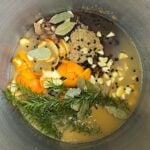
Apple Cider Turkey Brine with Citrus, Ginger, & Herbs
Equipment
- 1 turkey brining bag optional
Ingredients
- 3 cups apple cider
- 2 cups light brown sugar
- 1½ cups kosher salt
- 2 tablespoons peppercorns
- 6-8 whole bay leaves
- 6 cloves garlic peeled and coarsely chopped
- 4-5 sprigs fresh rosemary about 10-inches long
- 3-4 tablespoons crystalized ginger chips or chopped candied ginger
- 3 large oranges peel only
- 1 gallon cold water
- 1 gallon ice about 8 lbs (3.5 kg)
Instructions
Make the Brine
- Start brining no later than the evening before cooking.
- In a large stockpot, combine all brine ingredients except water and ice. Bring to a boil, stirring until salt and sugar dissolve.
- Turn off heat, stir in 1 gallon cold water, and let brine cool completely. (Chill in fridge or freezer briefly to speed cooling.)
Prepare the Turkey
- Use a fresh or fully thawed turkey. Remove wrapping and cavity parts (neck, heart, liver) - save for giblet gravy if desired.
- Remove the plastic leg holder with kitchen shears.Place turkey in a large stockpot or brining bag.
Soak the Turkey
- Pour the cooled brine over the turkey.
- Cover the pot or tie the brining bag securely. Weigh down the turkey if needed to keep fully submerged.
- Brine 1 hour per pound; ideally 16 hours, minimum 8 hours, maximum 36 hours.
Rinse & Roast
- Fill the brining pot or bucket with fresh cold water and soak the turkey briefly to remove excess salt.Pat dry with paper towels. For extra-crispy skin, chill uncovered in the fridge for a few hours before roasting.(You can probably skip this step for pre-brined turkeys if using a half-salt brine.)
- For simple, no-fuss directions on how to roast a turkey, visit Perfect Oven Roasted Turkey.
Notes
- Never pour hot or warm brine over a cold turkey.
- Always refrigerate the turkey while brining; never leave at room temperature.
- Sanitize surfaces after handling raw turkey.
Nutrition
This website provides approximate nutrition information for convenience and as a courtesy only. You are solely responsible for ensuring that any nutritional information provided is accurate, complete, and useful.
Love it? Pin it! If you love this Citrus Turkey Brine recipe, be sure to save it!
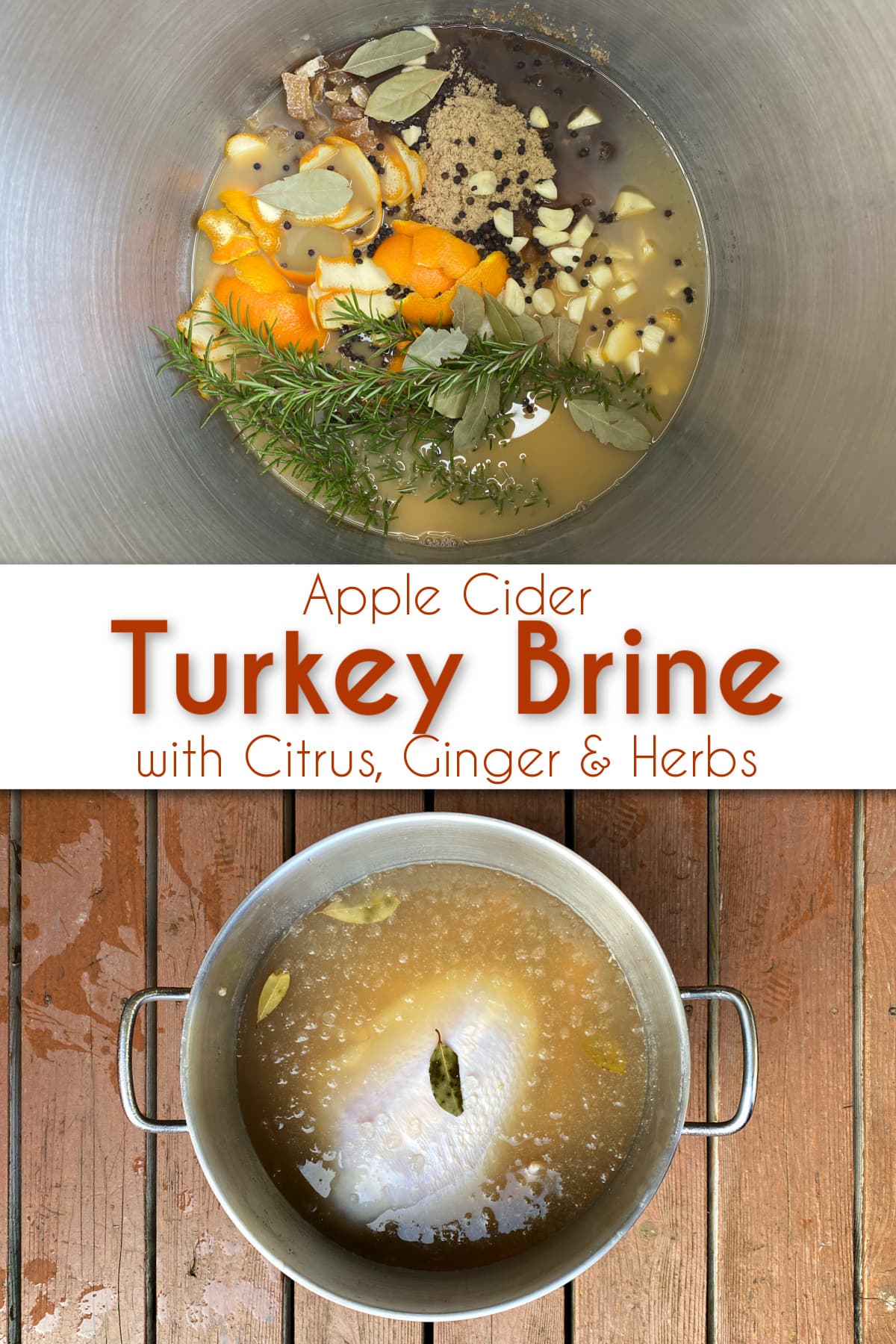
Did you like this recipe? Please leave a star ⭐️⭐️⭐️⭐️⭐️ rating below in the comments section! You can also stay in touch with us by following us on Pinterest, Facebook, and Instagram.





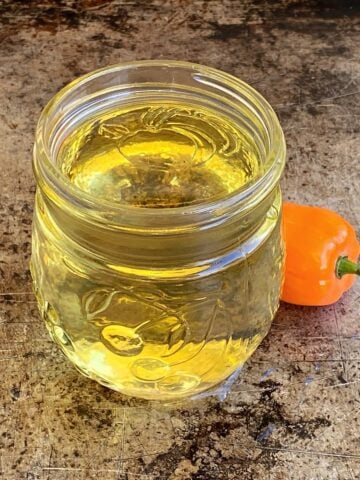
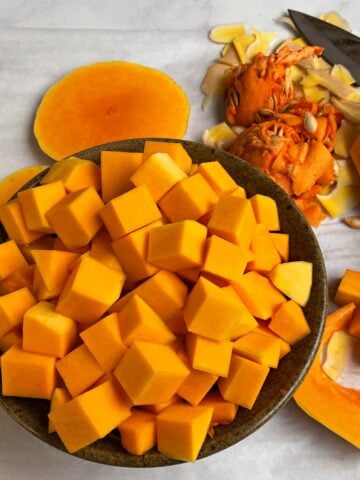
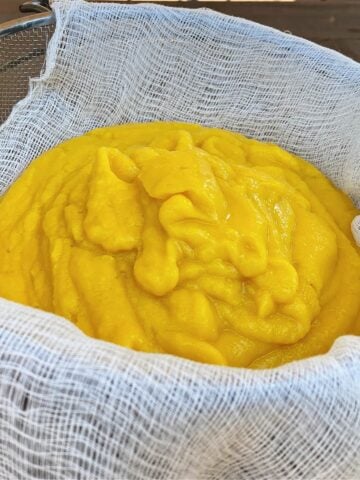
Leave a Reply